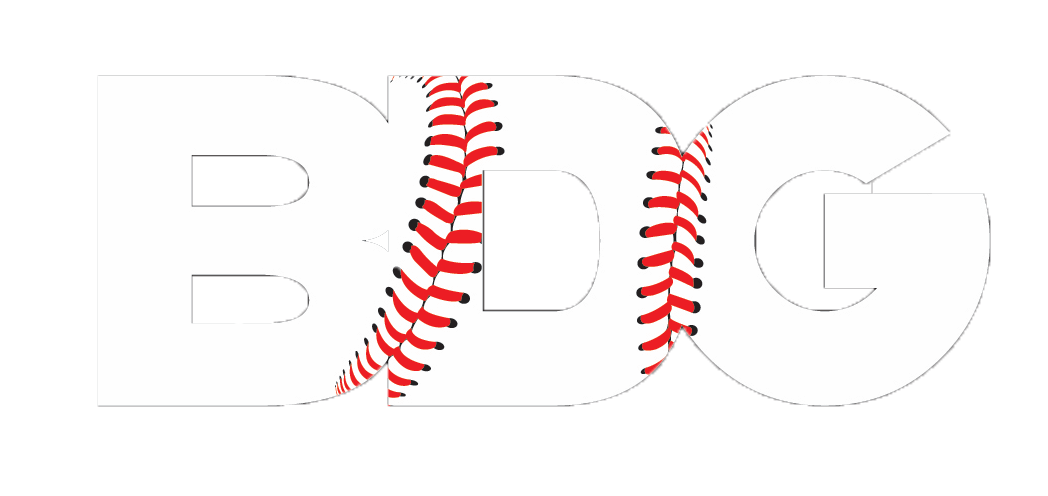Preparing For a Baseball Showcase: 8 Tips to Perform Your Best
Introduction: Preparing for a Showcase
A common theme that we deal with in Ontario are athletes showcasing during the beginning or end of an offseason. You’ll see players or teams host or attend showcases in February through April (our season starts in May) or even as late as October or November. Whether this is ideal or not (in most cases it’s not) depends on the player’s situation and isn’t something I want to get into right now. The reality is that regardless of what is preached or bickered about on the internet, some players are going to attend these showcases. Our goal then, is to simply help put them in the best possible position for success.
We see players, coaches, and organizations make a lot of errors in the preparation process and figured that the problems that we face aren’t unique to our bubble.
The goal of this post is to help players do a better job at physically and mentally preparing for a showcase. Despite the length of this post (fair warning it’s not short), it is not an exhaustive resource and shouldn’t be taken in isolation.
The process of optimally preparing for a showcase or big event is individual to the athlete and simply cannot be written out in a blog format. There are many other components involved and I highly recommend that parents & players to conduct their own research, get in touch with a knowledgeable coach, and take the time to sit down and figure out their own process. My hope is that this is just a spark and not the fire itself.
#1 Tapering Your Workload
The last thing that we would want to do, especially if we are showcasing in the offseason, is to head into it anything other than fresh. Intuitively this makes good common sense. You wouldn’t want to try hitting a 60 yard dash PR feeling overworked and fatigued. Similarly, you wouldn’t expect to PR off the mound when your arm’s hanging from a previous practice or your legs are tight from yesterday’s squatting.
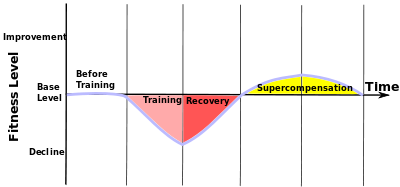
Tapering is important in the offseason, a time when training volume & intensity is either beginning to increase or is very high; even more important in players with a young training age. Our bodies may be incurring more workload than normal and therefore we may be accumulating fatigue.
Understanding how our body responds or adapts to the imposed stress is a difficult task, especially if we aren’t accounting for it in some capacity. In an ideal world, athletes would be measuring their physical preparedness & fatigue throughout the offseason. We have our guys track external load from training, subjective wellness questionnaires, and some performance measures. If you aren’t doing that right now, no sweat, you can usually get a decent indication of how you’re body is doing based on whether your metrics are going up or down.

Probably do not drop frequency. That is, probably don’t drop how often you are training on a weekly basis.
Almost definitely drop the volume. That is, you should probably drop the total number of reps or sets that you are completing.
Generally, I tell high schoolers to gradually drop their volume by 40-50% for 7-14 days. If you’re running a 5×5 program, drop the number of total reps from 25 to 12 per exercise while keeping the intensity the same. If you’ve been throwing 120 high intensity throws a week, drop that to 50 or 60.
#2 Adequate Nutrition
We get a lot of questions about what to eat, when to eat it, and whether you should be refuelling during the showcase. In the hours prior to performing max effort throws, swings and sprints, you’ll want to eat something that will sustain your energy levels, boost performance, and hydrate you.
I’m going to defer this to the team at Precision Nutrition. They are professionals who have dealt with thousands of cases like these and are one of our favourite sites for nutritional information.
Here’s what they recommend. You have either two options, though we probably lean towards Option 1, for consuming food prior to showcasing.
Option 1: Eating 2-3 Hours Before
Consume adequate amounts of protein, from any protein source. This doesn’t need to be in the form of a protein shake. Two palms worth of protein dense foods does the trick.
Consuming real carbohydrates helps preserve muscle and liver glycogen (fuel), stimulates insulin release to prevent muscle breakdown and fuels shorter intensity training. Two fists of vegetables and two cupped handfuls of carb dense foods works well.
Consuming fats provides some vitamins, minerals, and helps slow down digestion to keep you on an even keel. Two thumbs of fat dense foods works well.
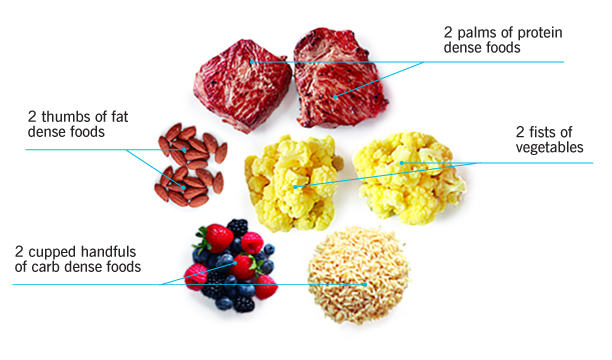
Option 2: Eating 0-60 Minutes Before
Some people prefer taking in a smaller meal closer to working out. The potential problem, however, is it leaves you with less time to digest. It is recommended to consume something liquid in this scenario, like a shake or smoothie.
PN recommends the following:
1 scoop of protein powder
1 fist of veggies (spinach or kale are good options)
1-2 cupped handful of carbs (fruits are great)
1 thumb of fats (mixed nuts or flax seeds)
Low-calorie beverage like water or unsweetened almond milk
A whole blog post could be dedicated to answering the question of whether taking pre-workout stimulants is a good idea. Should a player really be crushing some C4, Kraken, Shredded AF, 1 More Rep or Nitro Surge before a big event? (lol)
As always, this requires a highly individualized and context driven answer. One that I personally don’t believe is as black & white as some may claim. I’ve seen players take a scoop of pre-workout for the first time before a showcase and hit PR’s. I’ve seen the same situation where a player got jittery, almost puked and massively underperformed. Things like previous exposure, training age, experience in showcases, psychological state & tendencies, the state of your adrenals, hydration, among many other factors, all come into play.
My general advice is that if you haven’t taken a pre-workout before or have tapered off it, consuming it right before a showcase is NOT recommended. If you’ve been using these stimulants leading up to the event then it’s probably NOT recommended coming off them for the showcase.
#3 Getting Adequate Sleep
The most obvious and predictable piece in this article is ensuring that you’re getting adequate sleep. During periods of sleep, the body repairs and renews tissues, nerve cells, strengthens immunological processes, and restores neurochemical homeostasis. If that sentence doesn’t sound like ‘recovery’ and the importance of taking sleep seriously doesn’t jump at you, then I don’t know what will.
Studies have shown that athletes tend to sleep significantly less than non-athletes, averaging just 6.5-6.7 hours per night. This number is worse when athletes play night games (Fullagar 2015) or on the nights prior to competition. If you have been chronically getting less than 8-9+ hours of sleep a night, you may be incurring what’s called a sleep debt. Much like debt in real life, it doesn’t just go away on it’s own – you have to work on it.

The results of acute sleep loss on performance, however, are a bit of a mixed bag. In some instances, there were no negative effects of losing sleep the night prior to testing different cognitive and physical performance based functions. After purveying the literature on the topic, Fullagher et al concluded that:
there are mixed results regarding objective performance decrements in the current scientific literature.’
How much sleep have you been getting over the last few weeks? How hard have you been training? Have you accumulated a sleep debt?
In most cases, when faced with answering these questions our athletes will give us a deer in headlights look and say, ‘Ok I gotta focus on getting better sleep.’ Often, it’s just better to be safe than sorry and prioritize sleep quantity and quality a week or more leading up to the showcase. This falls in line nicely with the idea of tapering to recover from residual training fatigue.
With the help of Simpson’s 2017 literature review, here are some of our recommendations.
- Develop a sleep environment similar to a cave; cool, dark, quiet and comfortable. Ambient noise and light can disrupt sleep cycles or lighten sleep, so it’s best to keep your sleeping space entirely dark and quiet. There is likely no need to get caught up in exact room temperatures – although it’s suggested that 18C is the hotspot – just make sure that you’re not uncomfortably hot.
- Athletes should be encouraged to end caffeine usage after lunchtime (a result of their 3-7 hour half-life in adults) and cut alcohol consumption 3-4 hours prior to sleep.
- Exposure to blue light should be limited in the late evening as it may result in difficulty falling asleep and delaying the release of melatonin. In other words, stay off your tablets, iPhones and computers! If you have an iPhone, make sure that you turn on the Night Shift function in the display & brightness settings. Night Shift will automatically change the colours of your display to the warmer end of the spectrum and you can adjust the settings according to your sleep schedule. For your computer, you can download a free software app called F.lux which will change the screen emission to warmer temperatures like, Night Shift.
- Establish a sleep/wake routine and consider implementing a 30-60 min ’wind-down’ period before bed. The literature suggests that this can be flexible, but the athlete should be engaging in relaxing, pleasant, non-productive activities like reading, or meditation (sound like a good time for visualizing your number… eh?)
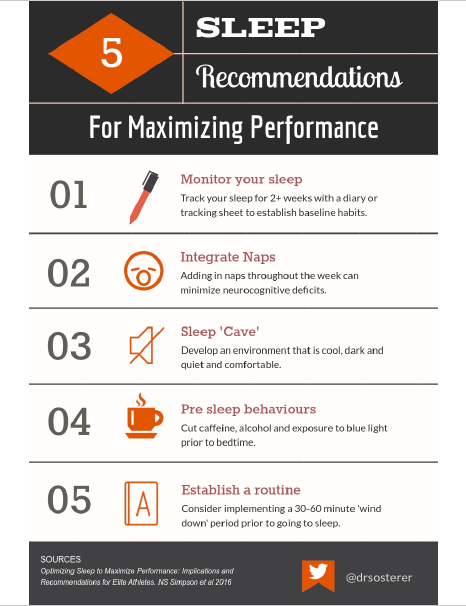
#4 Mindset and Focus
It shouldn’t shock me that in 2018 players are foam rolling while texting or watching videos on their phone right before showcasing. It shouldn’t shock me that players goof around with each other in their warmup throws, chat about social life or what’s going on that night. It shouldn’t shock me that players are focusing on the performance of others, rather than zoning in on their own process. But yet, all of these things still shock me every time I visit a showcasing event.
Go on Instagram, Twitter, or any other social media and you’ll see players posts pics and videos of their idols throwing gas, dropping bombs or making absurd plays in the field. Players spend so much of their time idolizing the outcome in a game that they often forget about the player’s process.
To get a better picture of what your mindset and focus should be like the night before or on the day of a showcase, trying asking yourself “What would Max Scherzer do?”.
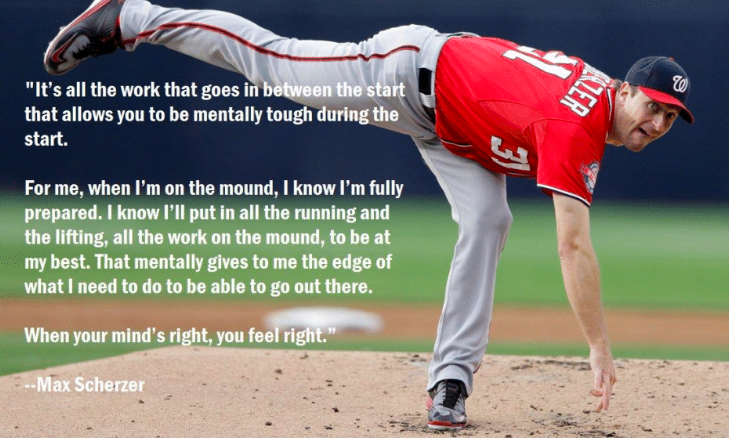
Or do you think that he’d have his headphones on, blasting emotion-inducing music, getting the mojo flowing, and visualizing himself achieving what he set out to do. More importantly, do you think that Scherzer would’ve only had this sort of focus on the day of the showcase? Or do you think that he would’ve had this date circled on his calendar weeks prior, visualizing hitting that MPH number necessary to achieve his dreams every day?
Quick Suggestions:
- Eliminate distractions and shift your mindset that this is your day. It’s not about your teammates, your Instagram following, or your social life. It’s about accomplishing what you came here to do.
- Internalize your attention & get in your own zone of focus as soon as you begin your warmup process.
#5 Know Your Number
When we talk about showcases with our guys, as well as when we are training in the offseason, we love the idea of ‘knowing your number.’ If you are entering a showcase or training to move on to the next level, the goal is to showcase your abilities by way of an objective performance metric.
How fast do you run 60 yards? How hard do you throw a baseball across a diamond? What is your peak velocity on the mound? How hard is your exit velocity in BP? Like it or not, scouts and college coaches are all about performance metrics and the concept isn’t going away anytime soon.
Heading into a showcase, and hopefully an offseason, you should have a goal for these metrics. The self-awareness required to do is difficult for most and, in our opinion, is where good coaches come in. Navigating what that number may be, requires an objective view and shouldn’t be set alone. If the highest number you’ve hit off the mound leading up to the event was 84, is it a realistic expectation to hit 88 on the day of the showcase? This cannot be stressed enough but if you set out for a number at the beginning of the offseason, your priorities should be geared towards achieving it.
Leading up to the event, you should be mentally rehearsing hitting that number when you wake up, throughout the day, and before you sleep. We encourage players to lock in a visual and really live that moment prior to it happening. We want them to paint a detailed picture of who is there, the sights and sounds, and how amazing it will feel for their parents to see. We want them to feel the emotions and the goosebumps they’ll get when they punch a 90 MPH fastball.
If you truly believe in accomplishing an objective goal, worked your tail off to get into a position to do so, and spend considerable amounts of time ‘living it’ before the big day comes, special things can happen.
#6 Getting Treated Beforehand
Arguably the least used preparation tactic that players use, at least in our bubble, is getting quality manual therapy prior to showcasing. If you want to get the most out of your body then seeing a licensed manual therapist can be a massive contributor.
There are a host of proposed benefits from getting soft tissue therapy done the day prior to showcasing, depending on the methodology used and what you present with. Whether the therapist makes a significant change in range of motion, releases connective tissue, alters long term movement, improves relative tissue glide, or creates a significant parasympathetic shift is far from being a certainty.
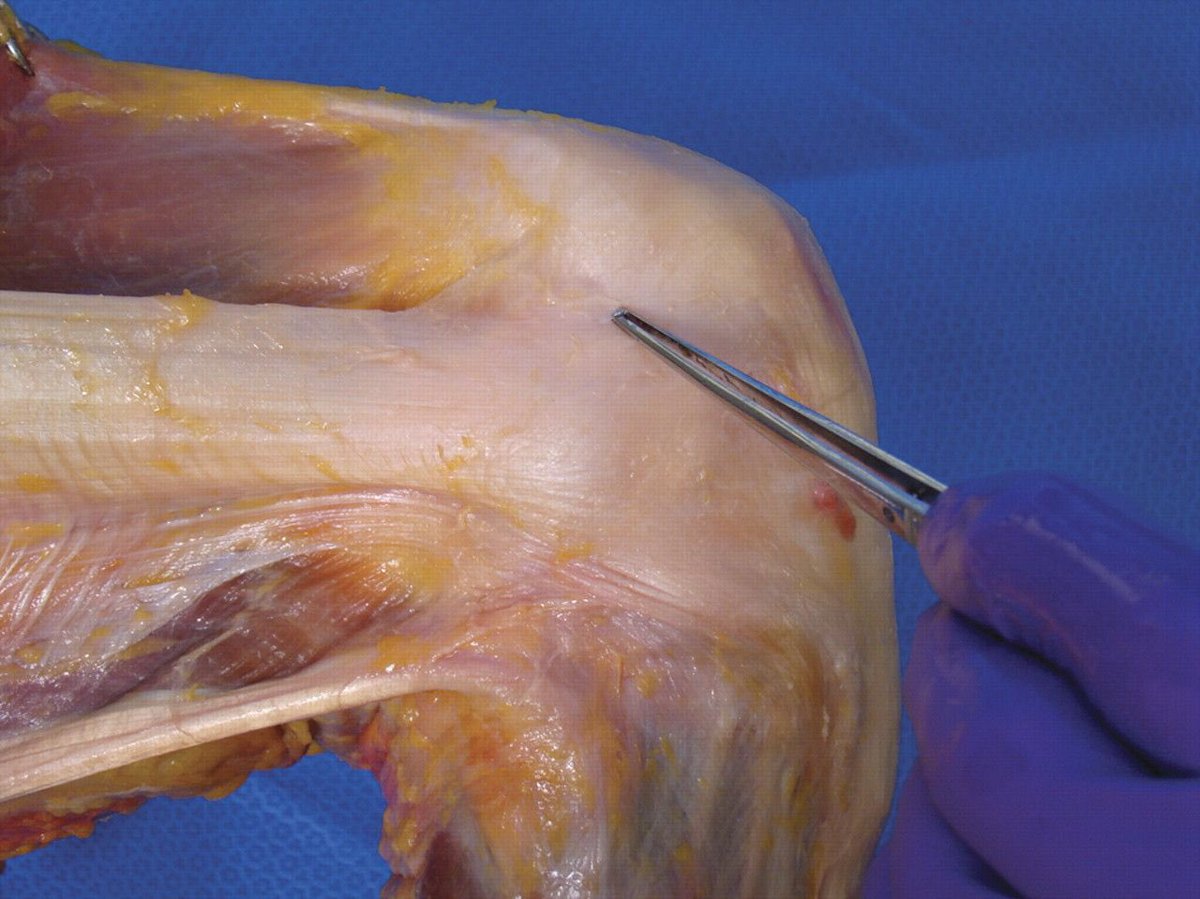
In almost all cases I’ve encountered, athletes report having a positive response to being treated prior to competing. Maybe we did make a change to the tissue quality. Maybe we improved joint positioning. Maybe we just played into their biases of getting checked out and now they psychologically feel better. The truth is that we don’t have a definitive answer. But if the athlete jumps off the table stating that they feel amazing and go into the next day with confidence that their body feels and moves better, then mission accomplished!
There is, however, more value to seeing a manual therapist than just getting soft tissue work. In being treated, you are also (hopefully) being assessed. With the Functional Range Release system, for example, a practitioner is evaluating and identifying joint limitations and deficiencies in controllable range of motion, teaching you how to adequately warmup and temporarily improve those ranges, and (hopefully) giving you a plan of attack for the next day. They aren’t just working on theoretically improving relative tissue glide. They are also empowering you to have confidence in your body the next day.
If you have a lingering ache or pain, feel stiff in certain areas, or just want to have confidence that your body is prepped for the big day, then I cannot recommend enough seeking out a therapist with experience in baseball.
#7 Adequate Warm Up
The logistics of showcases are often far from ideal and in our experience, can land players in a bit of a pickle. A lot of our athletes’ experience involves having to warm themselves up, warm up twice or even sit around for long periods of time. At some showcases you may be asked to show up at 11am and not have to perform until much, much later. In others, you may have a significant lull between running your 60 yard and taking batting practice.
A big key here is to already have your warmup routine in place. You should know how long it takes, what exercises and drills you’re going to complete, and then time it properly to show your best stuff.
Often, we see players running around without a plan. Doing a little bit of this, a little bit of that, checking their phone, or chatting with their parents. We’ll see guys asking other players “hey you wanna do a quick jog with me and then stretch out?” and then proceed to mimic someone else’s randomly concocted plan. The obvious problem with this is that you are not the same as the next player. Your warm up needs are not the same as theirs and vice versa.
Maybe you need a little more time mobilizing your thoracic spine? Maybe it takes you more throws to feel loose?
Ideally, the warmup should get up to almost 100% intensity. If we are preparing to get on the mound that means that we should (ideally) be getting in some high intensity long toss or pulldowns. In certain cases, we even advocate players use a pocket radar to make sure their intensity is where it needs to be.
Another reason why having a routine to fall back on is so important is because it takes away the stress of trying to figure things out on the fly. It’s one less thing you need to focus on. Ideally, the warm-up should also serve as a time to mentally prepare yourself. It’s the perfect opportunity to zone in on the task at hand, the number you want to hit, and build up the emotional energy.
Quick Suggestions:
- Warm up each joint individually and scan for areas that feel stiff or tight (we use Controlled Articular Rotations) and then spend some time mobilizing them.
- Make sure that your dynamic warmup includes working into higher intensity ranges. Add some jumping, sprinting or bounding to wake up your CNS.
- Warm up your skill close to 100% intensity.
#8 Post Showcase Notes
Most players are going to showcase more than once in their baseball careers. Even if they don’t, the idea behind preparing for a showcase is very similar to preparing for a big game, a big presentation, or just a big day in your life. It is therefore good practice to spend a few minutes capturing and analyzing your thoughts after the event. You want you to use your showcase as a learning opportunity so that you can perform better on the next one.
Spend a few moments the day after showcasing to write down everything you can. Things like what worked, what didn’t, what you felt leading up to or during it, and some possible areas for improvement on the next go around. In doing so, you will refine your process, learn more about your body and ultimately put yourself in a better position for the next big event.
